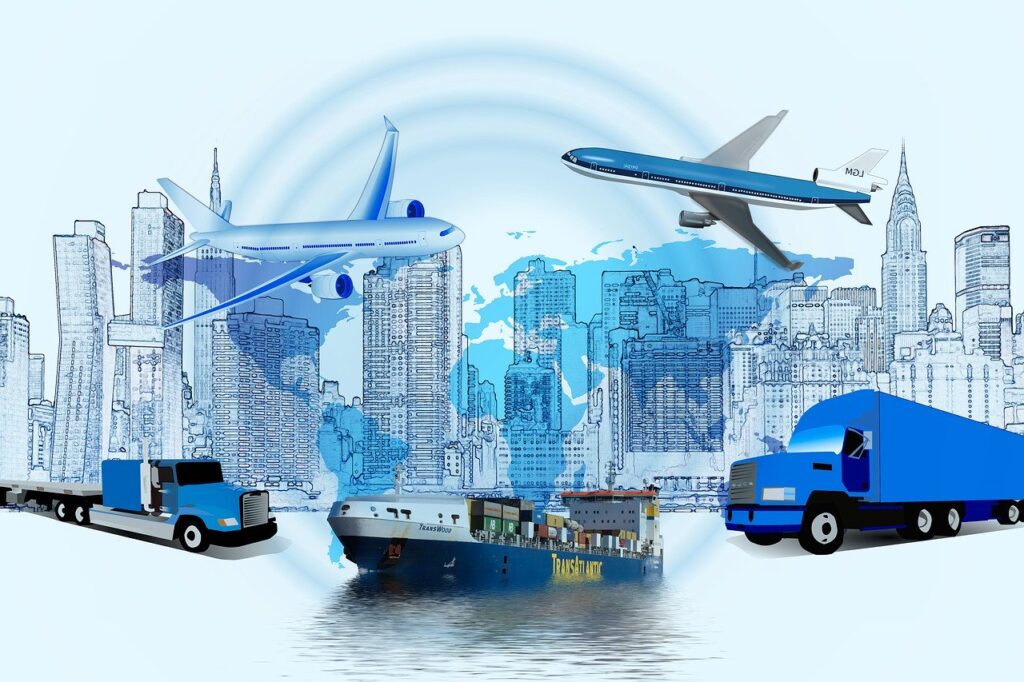Working better together – Supply chain innovation and collaboration post pandemic

Nick Pike, Chief Revenue Officer, Vizibl, discusses why tech & innovation in the supply chain is crucial for businesses to achieve post-pandemic success
As we move slowly into Phase 2 of lockdown, and we start to take those tentative steps towards a ‘new normal’ so businesses are scenario planning for the post-pandemic world. This includes remodelling parts of their business and looking at how they streamline, optimise and build resiliency. The impact of the pandemic is causing organisations to stop and think, and it is forcing change. They are embracing new ways of working, looking at ways to tackle aspects of their business differently and nowhere is this more keenly felt than through the supply chain. Right now, organisations are reviewing how they can better collaborate with their ecosystem of suppliers, particularly where they might be hitting problems in different parts of the supply chain and as a result need to change direction.
That’s because disruption to cross-border trade and just-in-time production is unprecedented. For example, if you were to try to procure medical supplies right now, you would find that more than 50 countries have put up restrictions. COVID-19 has not just infected people, it has spread contagion in global trade. The ripple effects are only now being understood and there will be months of supply chain disruption ahead.
The pandemic is exposing a myriad of cracks in a global supply system that companies have been operating for decades. Modern procurement strategy was born in the seventies, during the eighties there was a big focus on compliance, then cost cutting and centralisation as supply chain consolidation became the watchword. This has resulted in corporates becoming very focused on KPI tracking, often with a one-sided view of the supplier relationship, one of ‘we are managing you’.
However, business demands have evolved dramatically since then and now the demands are for sustainability, resiliency, efficiency gains and growth – growth through innovation and product development. For instance, we have just witnessed a great example of innovative thinking whereby Dyson created a new ventilator for the NHS in just ten days.
Organisations are waking up to the fact that they cannot deliver all these aspects alone, they must collaborate and work with the supply chain so that together they become one holistic virtual organisation. Mazda is a great example where it has worked to collaborate with the automotive supply chain carrying out a variety of activities in order to achieve mutual growth with suppliers and dealerships, both in Japan and overseas.
Nevertheless, many businesses still take a very traditional approach to their suppliers, predominantly one of cost cutting. As a result, this constant supplier squeezing harms relationships. Post pandemic there will undoubtedly be supply shortages, and the organisations that have not treated their suppliers well won’t be topping their suppliers’ list as the customer of choice.
Today supply chains are complex and suppliers are an incredibly valuable resource. For a start, a lot of innovation comes from small companies – most large enterprises source 70% of their innovation from the supply base. Additionally, they have buyer knowledge. Incumbent suppliers will know the buyer better than other organisations and they can offer advice, make sound judgement observations, plus they have expertise that the organisation might not have. For example, suppliers have a lot of infrastructure at their disposal, so they can utilise manufacturing facilities in other parts of the world, particularly when there are shortages.
But as I mentioned earlier, this industry has a lot of legacy and many are not evolving their products. A lot of the tech that exists today tends to focus on the administrative day-to-day management of suppliers. There are staff capacity constraints, processes and tools that don’t scale, and experience and expertise gaps. Very little of the process is dynamic, and it is hard for organisations to create alignment across the board and be consistent both internally and externally. Projects are duplicated as one department doesn’t know what another department is working on. This makes it hard to drive initiatives forward and to ensure that everyone is onboard with the same goals and objectives. Likewise, organisations struggle to put governance around new and existing projects and, often, they don’t even know if suppliers have hit their SLAs.
So, imagine the difference it would make if there was a way of remembering even the smallest details about your key supplier relationships. If you knew exactly what your project pipeline looked like and how it mapped against your organisational work-streams. If you could get a value on what this pipeline will deliver to the business over the next few years?
If this were possible it would enable companies to unlock opportunities to get 10x R&D, drive change in the business in a scalable way, and supercharge performance. What you would have is a business model that is predicated on continuous collaboration and communication with suppliers to drive agility and innovation growth.
Here at Vizibl, we realised how desperately this was needed and we built our own system that talks to what supplier collaboration and innovation truly is; shared vision and mindset; governance and stakeholder management; relational performance data; innovation pipeline management; useful measurements against business objectives; and the back and forth collaboration on all of these elements with suppliers to build truly valuable relationships.
This approach will be critically important as we embrace the challenges that a post pandemic world presents. For example, we expect to see a shift back to sourcing local suppliers, owing to anticipated prioritisation of agility over efficiency. But how do you make sure you are first in the queue for those much-needed materials? Through better supplier collaboration.
Future growth will come from innovation in the supply chain and organisations will need to look at how they bring the outside in and how they build the supplier networks of the future.
Resilience and agility will be the motto in this industry, so building better supplier relationships and more trusted sources to enable an emergency response or the changes required to certain projects will be fundamental.
And finally, building economic sustainability and having a sustainable supply chain will also be critical as organisations work towards achieving the sustainability goals set at Davos earlier in the year. Not only tracking but also improving their Environmental, Social and Governance (ESG) ratings.
Ultimately the real game-changer is when you drive all these synergies with hundreds of suppliers. Look at the Apple Store as a prime example of collaboration en masse. Without the apps, the iPhone is just another ordinary phone. This type of innovation and collaboration is not new but, post pandemic, it will be critical for survival. One final thought, if one good supplier can enable your company to build its brand, expand its reach, and establish its position – imagine what is possible when you work collaboratively with hundreds of suppliers!



